Provide your client innovation with SteelX
If you strive to provide your client with safe innovative solutions, then our SteelX 5:25 product is a great option. Imagine offering your client a pad footing with no traditional rebar, walls with only starter bars or slabs without joints. What affect would that have on the schedule of the project? How much safer would the work site be?
INTRODUCTION TO STEELX
Steel fiber enhanced concrete is not a new concept
Many shapes, lengths, and tensile strengths of steel fibers have been added to concrete for decades so many incorrectly assume SteelX is just ‘another’ steel fiber. Research indicates TSR is the only one that increases the Modulus of Rupture of Concrete. SteelX is twisted steel rebar (TSR); not steel fiber.
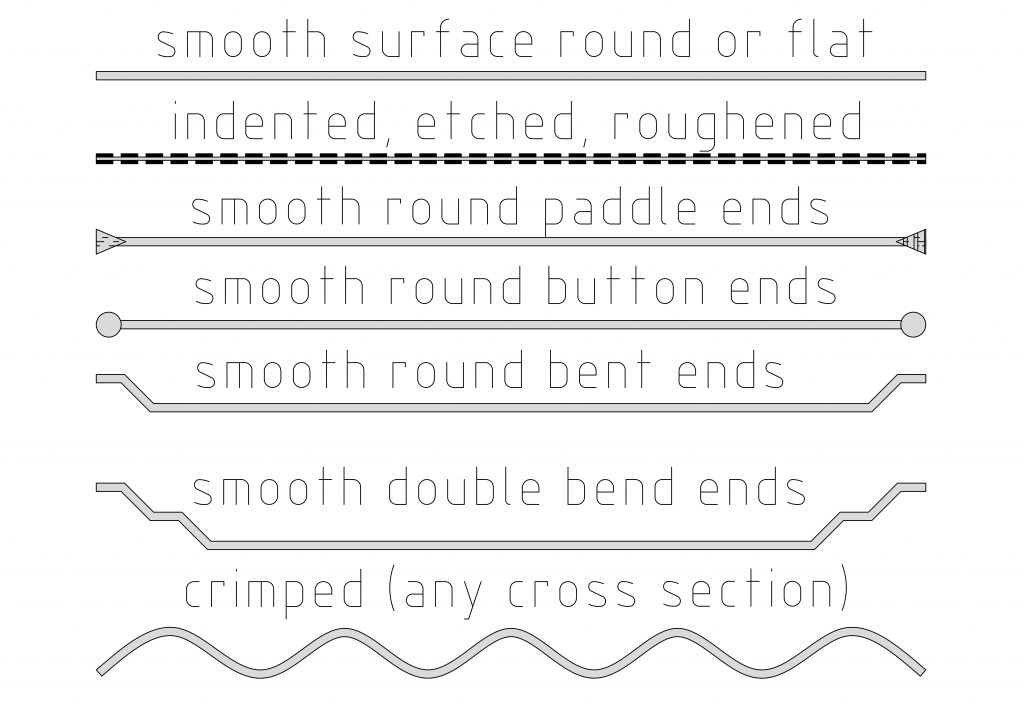
Understanding Twisted Steel Rebar
SteelX 5:25 Gold is Twisted Steel Rebar (TSR) that has a unique ability to bond with concrete due to its twisted shape, providing a torsional anchorage that engages before the concrete fails and that creates a true composite with the concrete.
Each piece of SteelX bonds to the matrix over its full length and must untwist as it pulls out of the concrete. This is significantly different from steel fibers where pullout is governed by friction.
Due to the superior bond of SteelX, the material properties of the concrete are improved prior to a crack forming i.e. SteelX provides proactive reinforcement. After a crack forms, SteelX provides a stable capacity allowing engineers to design just like rebar.
SteelX 5:25 can provide significant cost savings to your clients by removing mesh and rebar, reducing pavement thicknesses, cutting project schedules and improving site safety.
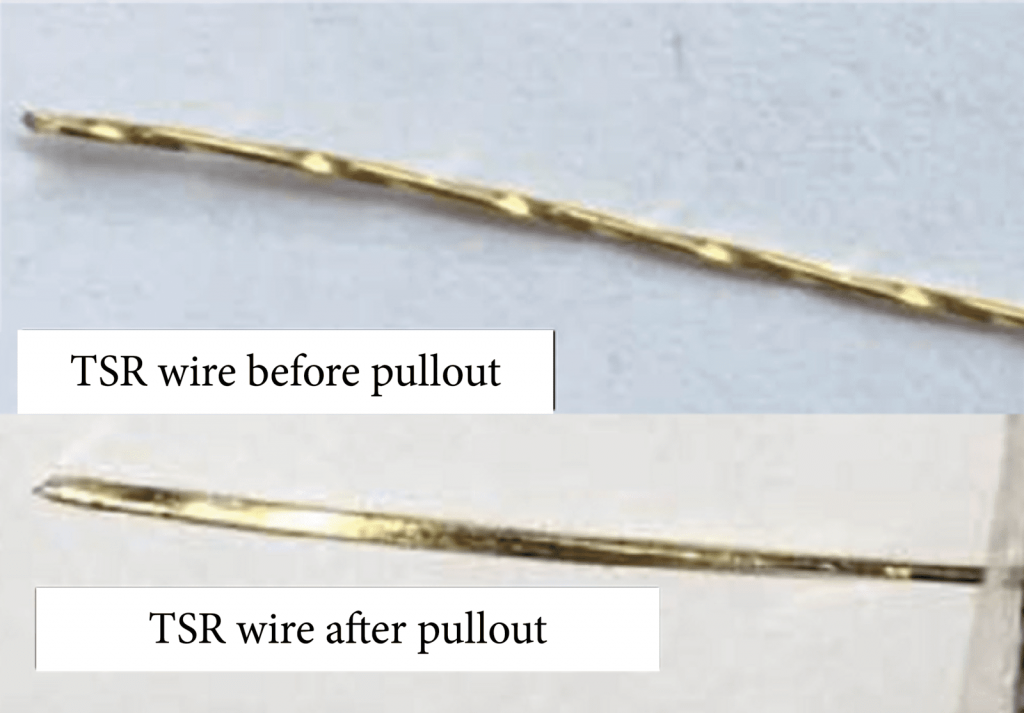
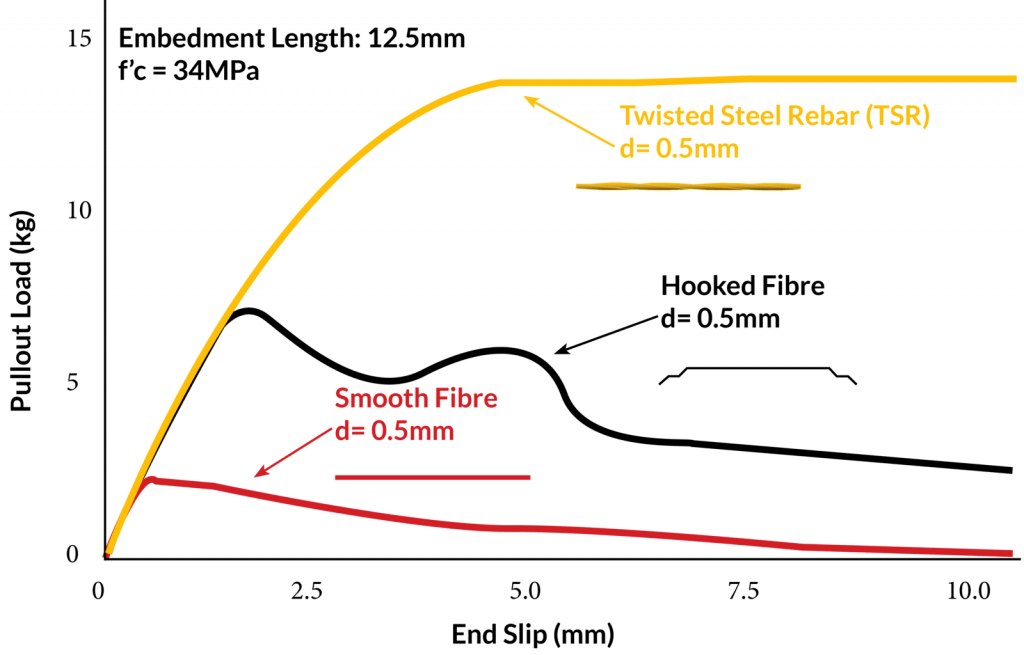
Properties of SteelX
SteelX enhances the bulk properties of concrete in three ways
Increased Modulus of Rupture (MOR)
SteelX increases the concrete’s First Crack Strength (MOR).
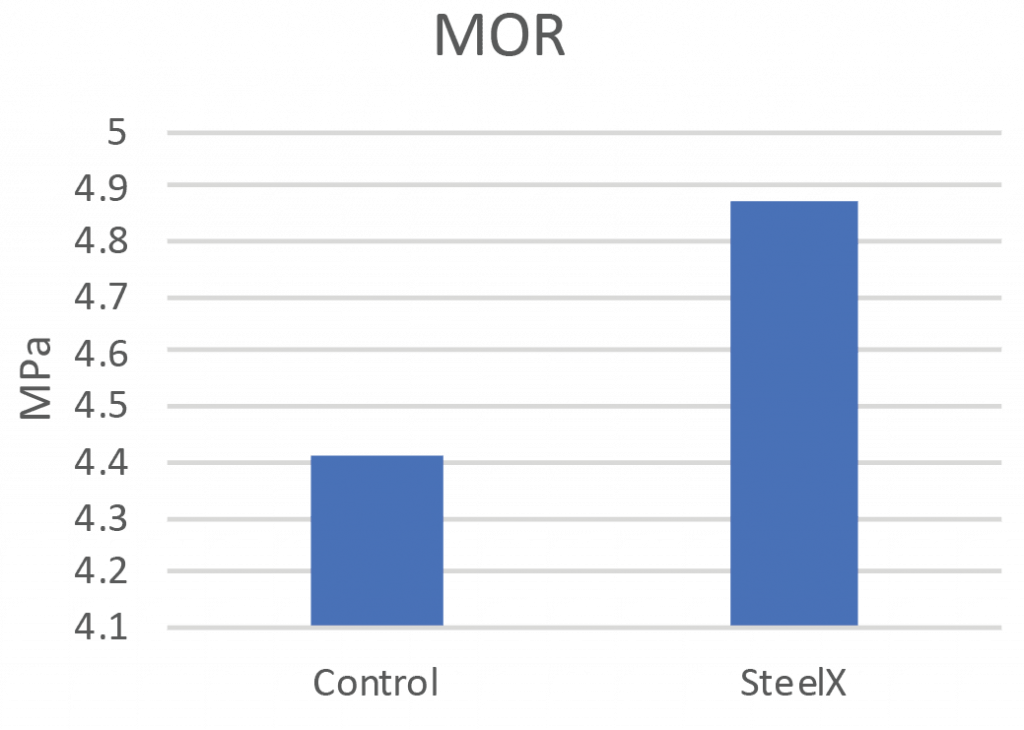
Increased Strain at First Crack
Twisted Steel Rebar not only increases the load at first crack, it also increases the amount of strain the concrete can carry prior to crack formation. This means TSR concrete is more ductile and flexible.
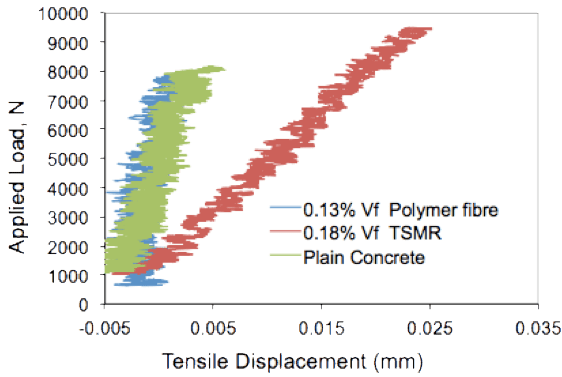
Increased Tensile Splitting Strength
Twisted Steel Rebar can improve the tensile splitting strength of concrete. Testing shows that even with relatively small dosages of TSR, significant improvement is achieved.
(Data from TSR product published in paper titled “Mechanical, durability and microstructural characteristics of ultra-high-strength self-compacting concrete incorporating steel fibers” by Amr S. El-Dieb. Date 1 April 2009.)
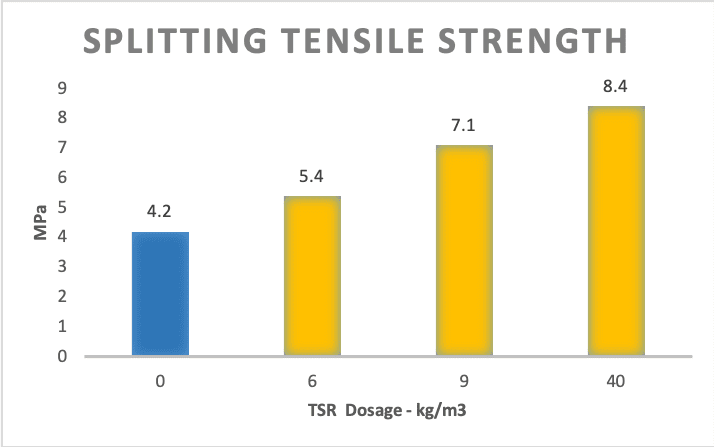
These advantages can be overlooked when designing reinforced concrete with SteelX 5:25, however they are real and tangible and should be recognized for the material benefit that they add to the long-term serviceability and durability of the concrete structure.
SteelX gives your client so much more!
Design Principles of SteelX 5:25
The SteelX design approach is outlined in our Design Manual. To receive a copy of our design method please email us at [email protected]
The tensile resistance of SteelX is developed from its bond and the unwinding of the twists in each piece. Since the SteelX must stretch and untwist before it can pull out of the concrete, it provides constant tensile resistance regardless of strain up to 1%.
Cross section diagram of a rectangular Twisted Steel Rebar showing the torsional untwisting force applied to pullout a SteelX Rebar.
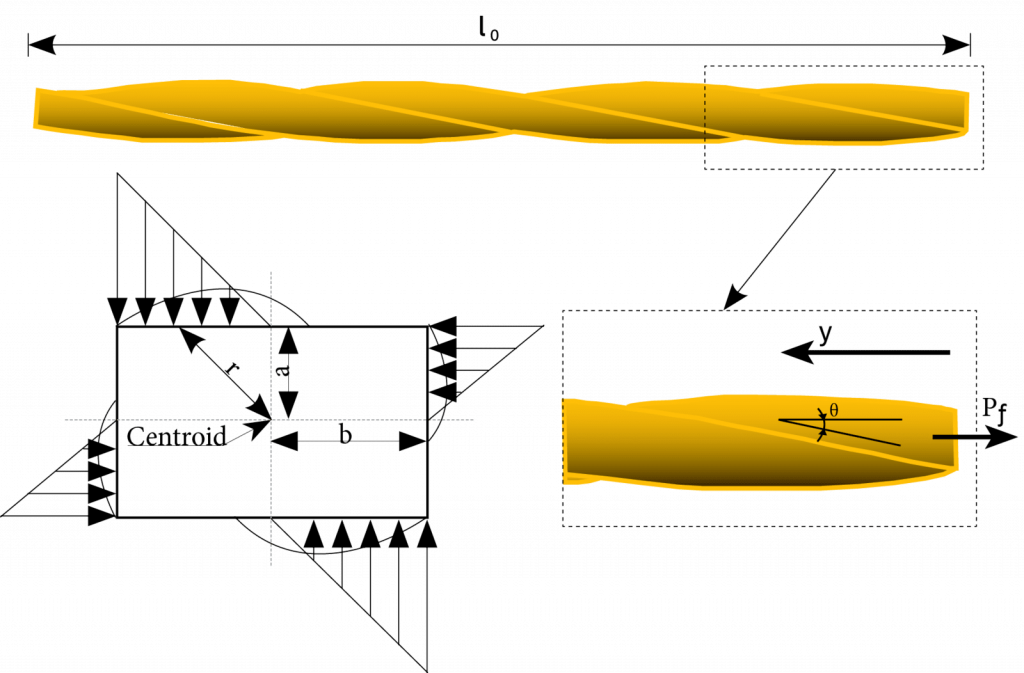
Using the force equilibrium and strain compatibility approach that engineers employ when designing a reinforced concrete section, the same approach is applied when designing a SteelX reinforced concrete section. SteelX can be designed using a rectangular stress block for the entire area in tension.

Design Classes
The Design Method adopts ‘Design Classes’ based on the consequence of failure and uses the tried-and-true LRFD (Load and Resistance Factor Design) method for deriving resistance factors and producing safe and reliable designs.
Design Classes are:
Class TS: Temperature and Shrinkage
Class S: Supported Structural Reinforcement
Class U: Unsupported Structural Concrete
In addition to the LRFD method, the Design Method employs additional redundancies to ensure stability for any structural concrete application. These include one or more of the following;
For Design Classes TS and S:
- Full support
- Geometric support in the case of lateral structures i.e. walls
- Strain limits to keep the section in a pre-crack environment
For Design Class U:
- Conventional rebar – for unsupported horizontal or cantilevered concrete.
X-Factor design
SteelX provides a stable tensile force that increases linearly based on dosage. To make it simple to design with SteelX, engineers can use a multiplier (the X-Factor) to convert the reinforcement ratio to a SteelX dosage. The Dosage is equal to the reinforcement ratio multiplied by the X-Factor.
The X-Factor is calculated as a function of the tensile strength of SteelX versus the conventional steel being replaced on a weight to volume basis, then converted into a multiplier of the reinforcement ratio.
To learn more about designing with SteelX please contact us for free training.
Jointless Slabs and Pavements
Among many, Jointless slabs and pavements are an innovation possible with SteelX. It is a similar concept to Continually Reinforced Concrete Pavements, but better.

Elastic Design
Elastic design is the safest, most durable design approach for a slab on ground or pavements

Reduced Thickness
SteelX provides enhanced material properties that result in reduced slab thickness through improved modulus of rupture.

No Joints
Joints can be eliminated by using ‘SteelX + mesh’ to provide an equivalent reinforcement ratio of 0.5%. This improves the crack pattern by redistributing the shrinkage stress throughout the section resulting in smaller, more tightly spaced cracks.
